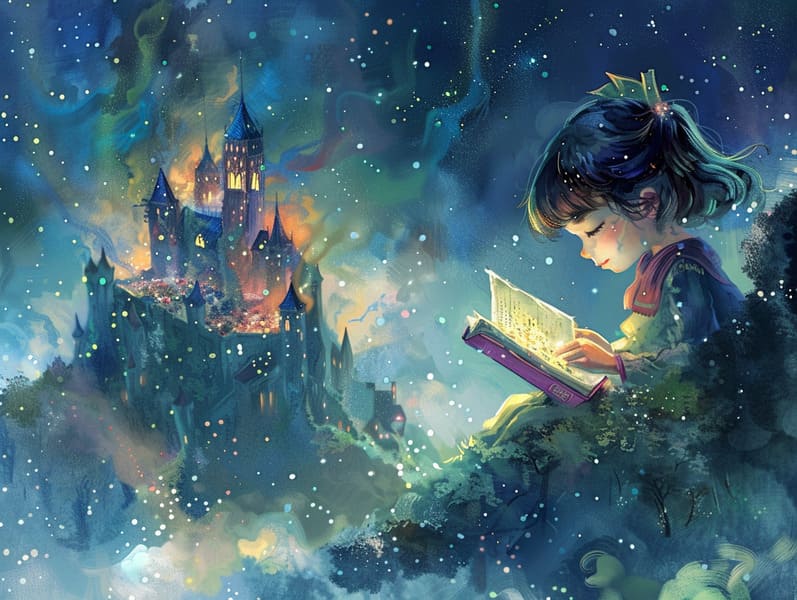The Creation of Popular Fairy Tales with Their Lasting Delight.

Classic fairy tales have ancient roots. These tales have been passed down from one generation to the next millennia before they were ever documented. They developed from a variety of societies, including European traditions. They were initially passed along among elders, often carrying themes and messages mirroring the societal norms and beliefs of the time.
Jacob and Wilhelm Grimm, the two Grimm brothers, were among the first to collect and release many of these beloved stories. Their collection, "Grimm's Folk Tales," included classics like "The Story of Cinderella," "The Bread Crumb Trail," and "Little Snow White," which have since become cornerstones in the world of beloved fairy tales. Similarly, Andersen's enchanting fairy tales, such as "The Mermaid's Tale," and "The Ugly Duckling," have stolen hearts worldwide, securing their place in the pantheon of famous fairy tales.
Despite their age, these stories remain as meaningful as ever, especially as children's night stories. These charming stories are now available in numerous formats, including vibrantly illustrated books, enchanting animations, and digital storybooks.
Their enduring popularity can be connected to several whimsical characteristics:
Significant Morals: Timeless fairy tales often whisper important moral lessons. Tales like "The Wolf and the Liar" teach the virtue of honesty, while "The Hare and the Tortoise" point out the virtues of resolve and humbleness. These stories offer the young clear distinctions between ethical and unethical, shaping their moral compass in a kind yet lasting way.
Sympathy and Perception: Fairy tales frequently depict characters facing difficulties and adversities, urging children to resonate with their struggles and encourage their triumphs. For instance, "The Story of Beauty and the Beast" teaches us the benefit of valuing inner qualities to perceive the real character of a being, fostering understanding and understanding.
Cultural Understanding: Many ancient fairy tales are infused with the cultural contexts from which they grew. Exploring these narratives can provide delightful insights into different ways of life, strengthening a sense of global respect and appreciation.
Inventiveness and Imagination: The imaginative elements in fairy tales—talking beasts—provoke children’s dreams. These stories take readers to fantastical realms, provoking imaginative dreams and a sense of awe that stays a lifetime.
Classic fairy tales are not only fantastical but also didactic. They provide magical tools in building various intellectual and emotional capacities in young ones. When ancient fairy tales are voiced, they strengthen speech development by teaching new linguistic elements and complicated sentence structures. This practice also nurtures auditory skills and mental focus, as little ones remain attentive, prepared to see what happens next.
Furthermore, exploring the themes and characters of ancient fairy tales can enhance problem-solving abilities and problem-solving abilities. Little ones are shown to spot patterns, anticipate outcomes, and understand cause and effect. These discussions also support young ones reveal their thoughts and feelings, boosting their emotional intelligence.
In today’s digital age, the availability of digital fairy tales has made these stories more reachable than ever. Web platforms and mobile apps offer large libraries of Grimm's fairy tales that can be accessed or listened to anytime, anywhere. Fairy tales recited are particularly common, giving an enjoyable way for little ones to experience these charming stories. Spoken stories and read-out-loud videos lead characters and settings to life, often enhanced by charming musical scores and tunes that improve the narrative experience.
The timeless fascination of timeless fairy tales lies in their ability to adapt to present days while sustaining their core values. Contemporary reinterpretations of these stories often present more diverse characters and modern settings, making them relevant to today’s audience. However, the key lessons of fearlessness, kindness, and righteousness remain unchanged, continuing to connect with young listeners of all ages.
Timeless fairy tales also offer a sense of reassurance and recognition. They introduce a structured narrative with a plain beginning, middle, and end, often winding up with the settlement of conflicts and the triumph of rightness over wrongness. This reliability can be placating for the young, extending a sense of consistency in more info an fluid world.
Ancient fairy tales continue to delight and coach new generations, maintaining their captivation and impact in modern society. As nighttime stories for kids, they grant access to a perfect blend of allure and teaching, facilitating moral values, empathy, and creativity. The proliferation of digital fairy tales and the favor of fairy tales told out loud secure that these old tales remain available to new generations.
By maintaining and relating these tales, we continue to celebrate the rich tapestry of creativity and cultural heritage. Whether you are perusing a beautifully illustrated book, accessing a digital collection, or listening via an audio story, the enchantment of ancient fairy tales is always within reach. These stories demonstrate of the undying presence of storytelling and its ability to unite us across epochs and places.
No matter if you are viewing a vibrantly illustrated book, perusing a digital library, or listening on an audiobook, the grace of famous fairy tales is always within reach.
These narratives highlight of the timeless power of fairy tales and its ability to connect us across generations and cultures, making a tie that fascinates and enlightens alike.